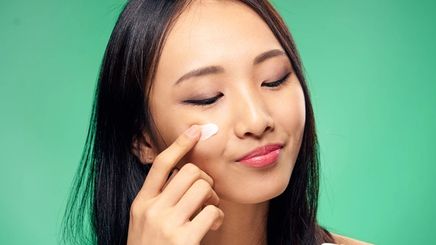
Milia occur when becomes trapped underneath the skin. The “keratin plugs” form hard cysts called milia, also known as “milk spots,” commonly found under the eyes, around the lips, on the cheeks, and on the forehead. These small white or sometimes flesh-colored bumps can sometimes look like , are rough to the touch, and can be . They’re not harmful or infectious, although they do make your skin appear rough. Here’s what you can do to minimize milia.
How Keratin Becomes Trapped
is a protective protein that makes up our skin, hair, and , with the primary function of binding cells together. Keratin is found in large quantities in the skin, and a “plug” happens when keratin clumps with dead skin cells, blocking and surrounding a . The resulting bump is called milia, and it’s not contagious, but it can be recurring, making the skin appear rough.
There is no single known cause why milia forms on the skin — it can be from irritation, genetics, or skin conditions such as eczema. Heavy occlusive creams and makeup products with liquid paraffin, liquid petroleum, paraffin oil, petrolatum liquid, and petroleum oil may also cause milia in milia-prone skin.
Removing Milia
Since milia isn’t a sebum plug — a pimple, whitehead, or — milia treatment involves a slightly different process. Usually, milia go away on their own without any need for intervention, but you can hasten the process by exfoliating the skin. As with all skin issues, do not attempt to extract milia or scrub them away. This will only worsen the condition. Use a toner with lactic acid and niacinamide to soften and condition the skin by gently exfoliating the epidermis and lightening .
You can also with gentle alpha hydroxy acids such as lactic acid or glycolic acid, often found in toners, masks, and peels to renew and brighten the skin. , which is a beta hydroxy acid, also slowly exfoliates dead skin cells. A study published in the National Institutes of Health. says it may help release the trapped keratin.
Use a toner with salicylic acid if you also have oily skin or acne. It should lifts dead skin and remove milia while treating acne deep within the pores.
Otherwise, visit a dermatologist. For severe cases, microdermabrasion, chemical peels, or laser therapy may be recommended.
Preventing Milia
To prevent milia, avoid rich, occlusive eye creams that add a barrier to prevent moisture loss. Not everyone will get milia from using it, but if you are prone to getting these keratin bumps, avoid rich creams. The thinner skin around the eyes may not be able to tolerate them. You may also give your skin a little nudge when it comes to exfoliation with serums and gentle scrubs. POND’S Bright Miracle Ultimate Pore Clear Facial Scrub has salicylic acid that can lift dead skin and release trapped keratin. Don’t forget to scrub gently.
Milia under eyes can be annoying, but it’s nothing to worry about, and it usually goes away on its own. If you want to speed up the process, try the products above and add regular gentle exfoliation to your skincare routine.